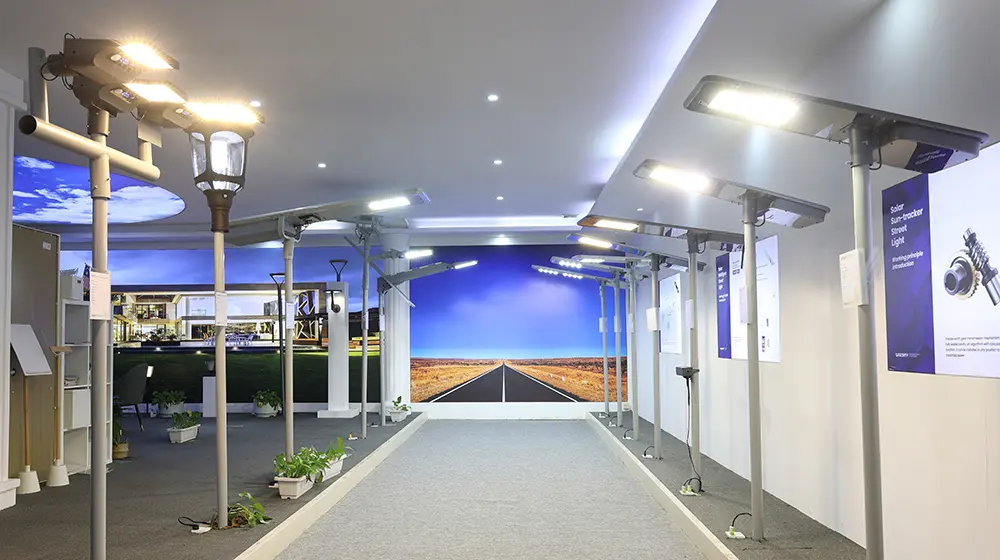A New Beginning for Industry Development
In recent years, the solar lighting industry has achieved remarkable growth globally, driven by the combination of energy transition, sustainable development, and technological advancements. As a clean and renewable energy solution, solar lighting has been widely adopted across sectors such as residential, commercial, industrial, and public infrastructure.
Looking ahead to 2025, the industry faces both new opportunities and challenges. Technological innovations will enhance product performance and reliability, policy support will guide the transition toward greener, low-carbon solutions, and diversifying market demand will push companies to explore flexible application scenarios. This article delves into the industry’s evolving trends in policy, technology, and market demand to provide customers with valuable insights and help them navigate fierce competition.
Green Transformation on a Global Scale
Strengthening of the Global Policy Environment
Global policy initiatives are accelerating the adoption of solar lighting. For instance, the European Union (EU), through its Green Deal, aims to achieve “carbon neutrality” by 2050, placing renewable energy at the forefront of its strategy. This initiative has spurred the widespread use of solar lighting, ranging from smart city streetlights to energy-efficient commercial facilities.
Similarly, the U.S. Inflation Reduction Act (IRA) offers significant opportunities. Its tax incentives and financial support help reduce project implementation costs, boosting the market competitiveness of solar lighting solutions.
Policy Opportunities in Emerging Markets
Emerging economies are among the fastest-growing regions for solar lighting adoption. Governments in Asia, Africa, and South America have introduced programs to support rural electrification and green city initiatives. For example:
- Kenya’s Green Energy City Program: Large-scale replacement of traditional lighting with solar streetlights, lowering infrastructure costs and providing stable illumination for remote areas.
- India’s National Solar Mission: Promoting solar lamps to meet electricity demand in underserved rural and urban areas.
These policies have increased demand for cost-effective, high-efficiency solar lighting products, creating opportunities for businesses to expand into new markets.
Policy Challenges and Responses
While policies foster growth, regulatory uncertainties pose challenges such as project delays or cancellations. To mitigate these risks, companies should:
- Diversify their market presence to reduce dependence on any single region.
- Build a flexible supply chain to adapt quickly to market changes.
Technological Breakthroughs: Intelligent and High-Efficiency Innovations
Advancements in Photoelectric Conversion and Energy Storage
Improving photoelectric conversion efficiency and energy storage performance remains central to solar technology advancements. By 2025:
- High-efficiency bifacial solar panels and all-solid-state batteries will significantly enhance product reliability and energy utilization.
- Companies like Sresky have already incorporated these technologies into their products, ensuring stable performance in adverse weather conditions such as cloudy or rainy days.
Additionally, breakthroughs in lithium battery technology, such as lithium iron phosphate batteries, provide superior safety and longer cycle life, reducing maintenance costs.
The Rise of Intelligent Lighting Technology
Intelligent lighting is shaping the future of the solar lighting industry. By integrating Internet of Things (IoT) and energy management systems, companies can offer highly personalized lighting solutions. For example:
- Sresky’s ALS technology ensures 24/7 efficient lighting while optimizing energy use through smart sensing and automatic adjustments. This feature is especially valuable for commercial and industrial projects requiring precise energy control.
Innovations in Eco-Friendly Materials and Design
Global environmental regulations are driving the adoption of sustainable materials. For instance, Sresky has transitioned from ferrous fittings to stainless steel with triple-anti-coating technology, significantly improving product weather resistance and longevity. These innovations not only reduce maintenance costs but also provide customers with a higher return on investment.
Changes in Market Demand: From Basic Lighting to Multi-Scenario Applications
Growth of the High-End Market
In developed countries, demand for high-end solar lighting continues to rise, particularly in villas, hotels, and commercial plazas. Customers seek high-brightness, intelligent lighting solutions that combine aesthetics with functionality.
Rapid Expansion in Emerging Markets
Emerging markets prioritize cost-effective solar lighting solutions. In regions like Africa and South Asia, rural electrification projects are driving demand for affordable, durable products, making these markets ideal for achieving scaled growth.
Expansion of Commercial and Industrial Applications
The application scenarios for solar lighting now extend beyond residential and public spaces. For example:
- Parking lots, highways, and industrial parks increasingly prefer solar lamps for their low operating costs and high stability.
- Sresky’s Atlas series is widely utilized in such projects, demonstrating versatility and performance.
Challenges and Countermeasures
Market diversification also brings challenges, such as intensified price competition and rising logistics costs. Companies can counteract these challenges by:
- Implementing differentiation strategies, such as developing intelligent products.
- Enhancing brand image and offering one-stop solutions to increase customer loyalty.
Comprehensive Analysis of Opportunities and Challenges
The solar lighting industry thrives on the synergy of technological advancements, policy support, and evolving market demand. However, balancing innovation, cost control, and market diversification is crucial to overcoming challenges:
- High-end markets require continuous technological innovation.
- Emerging markets demand affordable yet reliable solutions.
- Policies remain a double-edged sword, offering both growth opportunities and uncertainties.
The year 2025 marks a pivotal moment for the solar lighting industry. To seize emerging opportunities, companies should:
- Invest in intelligent solutions to cater to high-end and commercial markets.
- Monitor policy dynamics and mitigate risks through market diversification.
- Partner with reliable industry leaders like Sresky, known for its innovative products and quality service.
As a pioneer in the field, Sresky remains committed to advancing the industry through technological innovation and exceptional customer support. If you have any questions about industry trends or products, please contact us—we are here to assist you.
